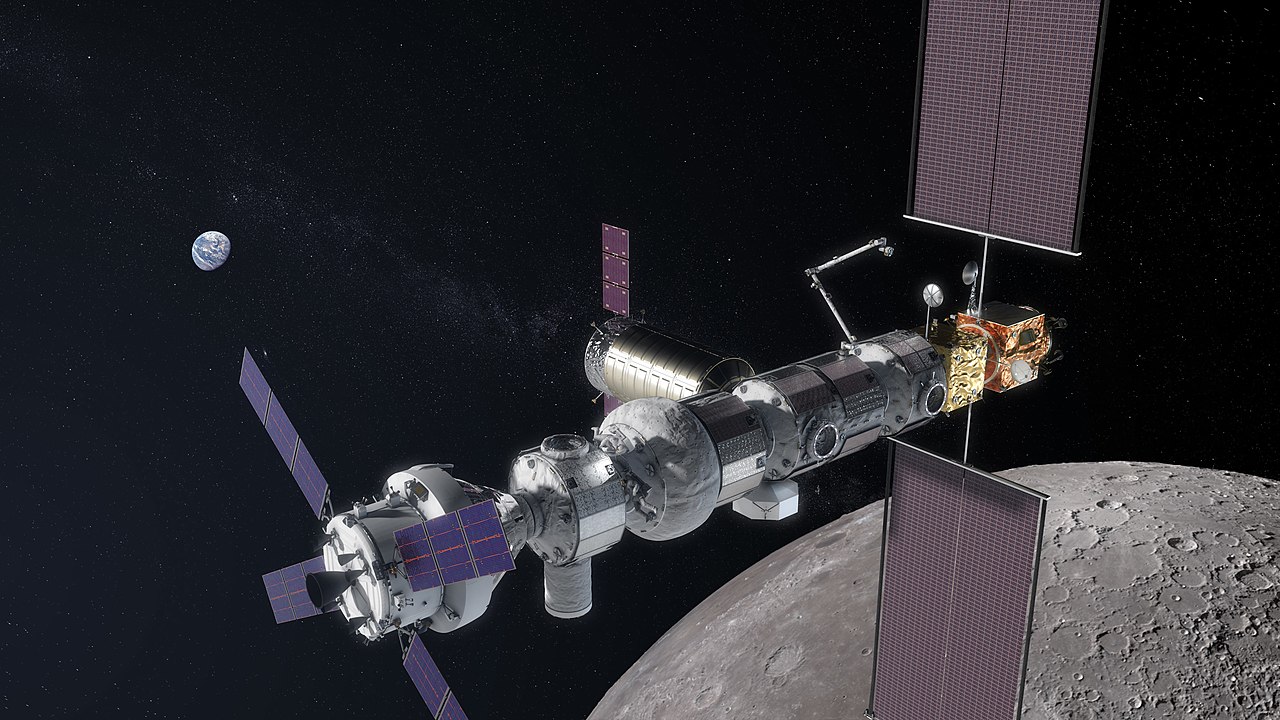NASA Gateway.jpg

Part 2 of 2 Parts (Please read Part 1 first)
In September of 2017, NASA and Roscomos, the Russian counterpart to NASA, signed a joint cooperation agreement. This agreement called for collaboration on exploration of the Moon and deep space, including the development and use of the Gateway.
The U.S. National Space Council (NSC) was created in 1989 in the Executive Office of the President of the United States during the administration of George H.W. Bush. It was a modified version of the National Aeronautics and Space Council that ran from 1958 to 1973. It was disbanded in 1993.
The purpose of the Council was to advise the president on U.S. space policy. The Secretaries of
State, Treasury, Defense, Communication, and Transportation were included on the Council. The Director of the OMB, the Chief of Staff of the President, the Assistant to the President for National Security Affairs, the Assistant to the President for Science and Technology, the Director of the CIA, and the NASA administrator were also on the Council. The Council was chaired by the Vice President.
The NSC was reformed and reactivated in June of 2017 by the Trump administration. Later in 2017, the Council said that its members felt that lunar exploration should be a primary goal. The Trump administration released its first space policy directive list in December of 2017. In the directive, Trump called for NASA to prioritize a return to the Moon before any manned missions to Mars which had been a priority of the previous Obama administration.
NASA renamed the Deep Space Gateway the Lunar Orbital Platform-Gateway in February 2018 in its budget request for 2019. That budget request also suggested that the U.S. should stop funding operations of the International Space Station in 2024 to free up funds for the Gateway.
At the end of February 2018, NASA held a Deep Space Gateway Science Workshop in Denver. One of the reasons for the workshop was to assist NASA in the development of a science plan for the proposed lunar complex. NASA also launched the Revolutionary Aerospace Systems Concepts-Academic Linkages (RASC-AL) design competition for university students in 2018. This competition was held to develop concepts for the Gateway.
In the middle of 2018, U.S. Vice President Mike Pence said that U.S. astronauts could possibly travel to the lunar space station as early as 2024. However, so far, the project is in the early design stages. It is a little early to specify completion dates because the design is evolving. The prime contractor for the four-person space station will be announced later this year.
In the same month as Pence made his prediction, Jim Bridenstine, the NASA administrator, told interviewer that the Gateway will not be any where near as expensive as the cost of sending Apollo astronauts to the Moon in the 1960s. As a matter of fact, considering that the NASA share of the federal budget was four and a half percent when the Apollo missions flew and is now only half a percent of the federal budget, the mission could not be accomplished if the costs were comparable to the Apollo missions.
NASA is also encouraging the development of additional international Gateway partnerships. Important candidates for these partnerships will be the current partners of the U.S. on the International Space Station. These partners include Russia, Europe, Japan and Canada.